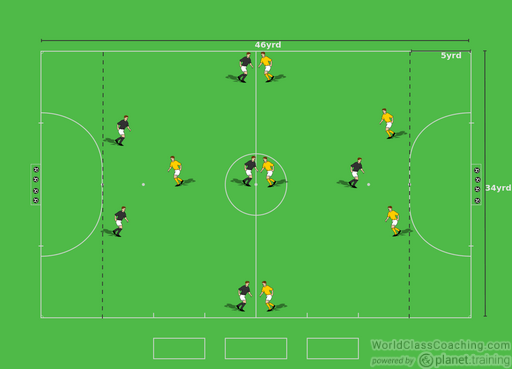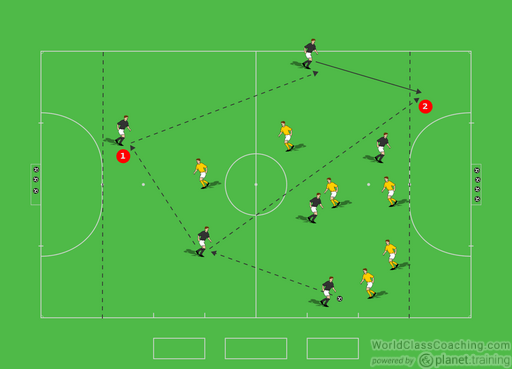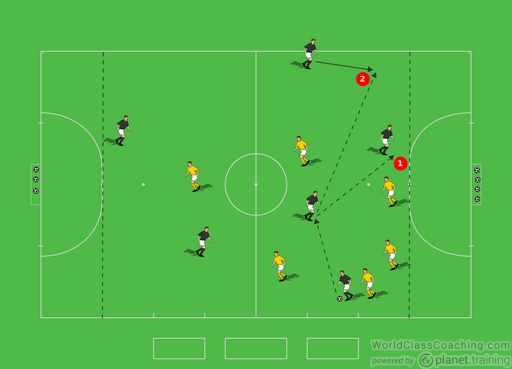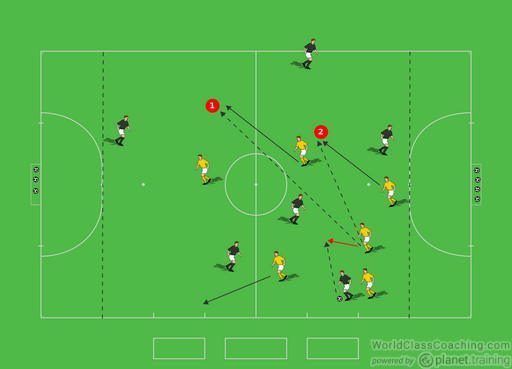By Sean Pearson
Area: 34 x 46 yards
Time: 20mins
Players: 6v6
Objective:
• To recognize when and where to change the point of attack on the flanks
• To decide how to change the point of attack
Set Up:
The playing area is 3 zones one large middle zone with 2 end zones. Both teams set up in a 2-3-1 (however they can set up in any formation you wish).

Execution:
The aim is for both teams to dribble the ball into the end zone or receive the ball in the end zone they are attacking. Ask the defending team to compact the space on the flanks so that the attacking players see the picture of the area being compact. When they see this picture, they should look to turn and begin to switch the ball. Players who are on the same team should look to be at different angles and different depth to offer support.
Below we see the CB or CM offering support, they now have options to go forward or backwards depending on passing options and pressure. (1) The ball is played back and is switch in the shape of a U. This type of switch is high percentage but also slow and allows the defense to stay compact and slide. (2) a longer diagonal pass the top of the defense, coupled with the wide player starting wide and making an out to in diagonal run allows the change in the point of the attack to be quicker. Obviously this option is highly technical as it requires strength the lift the ball over the defense and accuracy over a longer distance as well as the receiving player being able to control the ball in the air while on the move.

A different picture for the flank player to see is if this pass back to the CM/CB is blocked because the defending team tries to anticipate the pass, the option to the CM/AM becomes available. Now the position of the ball has changed, the attacking team is in an advanced position in more space with the defending team unbalanced. If there is space to do so the pass can be made straight away to be more effective or the midfielder can commit a defender to take advantage of an overload (1). If the pass is played out wide the ball mist be ahead of the player so the attack maintains its speed allowing the receiving player to run on to it (2).

If the defending team wins possession they should look to spread out as much as possible and attack on the opposite side from where they just won the ball, either playing to the furthest player forward (1) for the counter attack or to a less risky option (2).

Variations:
• Add goals and goalkeepers
• Add neutral to allow overloads
• Introduce using the striker to change the point of attack
By Sean Pearson. Sean is also the author Coaching Team Shape in the 3-3-1, Coaching Team Shape in the 4-2-3-1 and Coaching Team Shape in the 4-3-3


